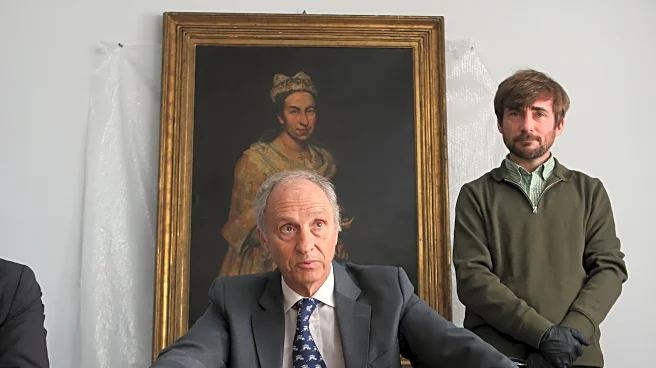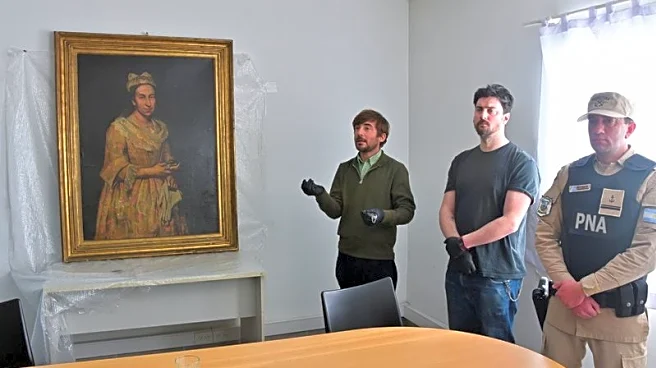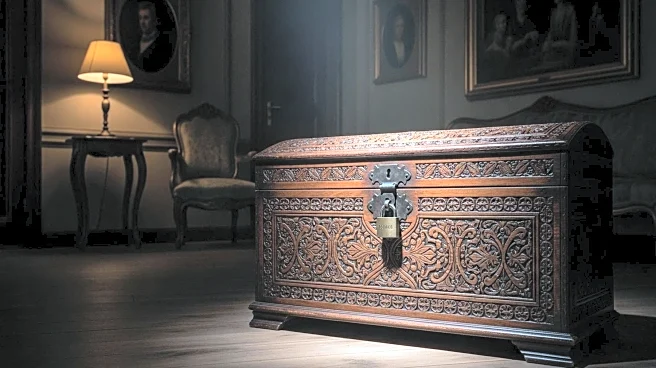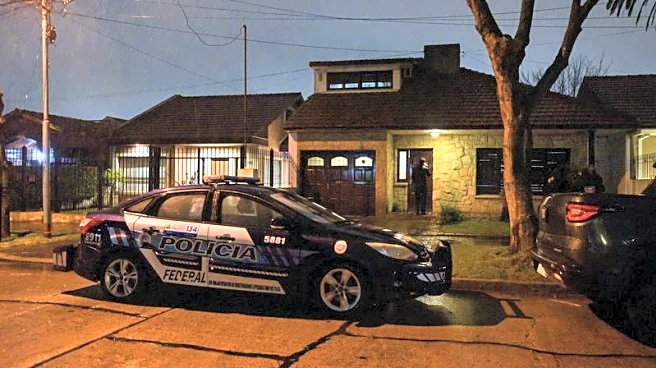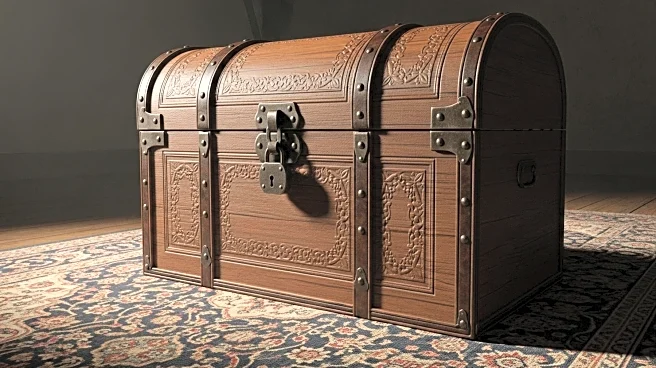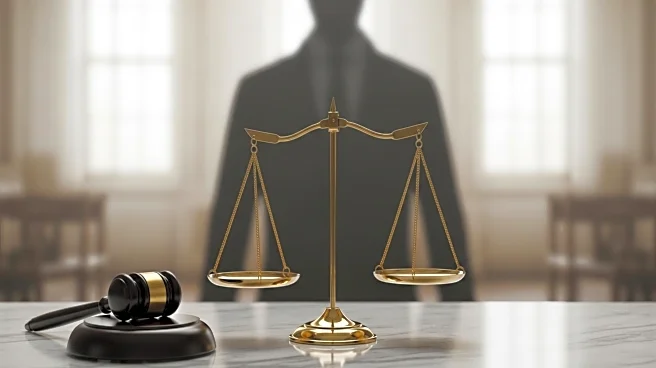What is the story about?
What's Happening?
Argentine officials have recovered an 18th-century Italian portrait, stolen by a Nazi officer during World War II, after it appeared in a real estate listing. The painting, 'Portrait of a Lady' by Giuseppe Ghislandi, was looted from Jewish art dealer Jacques Goudstikker. The discovery was made after Dutch reporters spotted the painting in a real estate ad for a home linked to Nazi fugitive Friedrich Kadgien. Argentine authorities conducted a raid, uncovering documents and prints from the 1940s, but initially failed to find the painting. The recovery highlights Argentina's historical role as a refuge for Nazis post-war.
Why It's Important?
The recovery of the painting sheds light on the enduring impact of Nazi looting and the challenges of restitution for stolen art. It underscores the historical connections between Argentina and Nazi fugitives, revealing how stolen Jewish property was brought to South America. This case highlights the ongoing efforts to identify and return looted art to rightful owners, a process complicated by decades of concealment and legal hurdles. The discovery also serves as a reminder of the cultural losses suffered during the Holocaust and the importance of preserving historical memory.
What's Next?
The investigation into the painting's provenance and its recovery may lead to further discoveries of Nazi-looted art in Argentina. Authorities may continue to search for other stolen artworks, potentially uncovering more historical artifacts. The case could prompt increased international cooperation in tracking and restituting looted art, involving organizations like Interpol and cultural heritage agencies. Additionally, the recovery may inspire renewed interest in Argentina's historical ties to Nazi fugitives, prompting further research and public discourse.
Beyond the Headlines
The recovery of the painting raises ethical questions about the responsibility of nations to address historical injustices and the role of art in cultural identity. It highlights the complexities of restitution, where legal, moral, and historical considerations intersect. The case also reflects broader issues of cultural heritage preservation and the challenges of reconciling past atrocities with present-day justice. As more looted art is identified, societies may grapple with how to honor the memories of those affected by the Holocaust and ensure that history is not forgotten.
AI Generated Content
Do you find this article useful?





